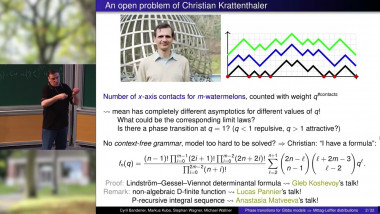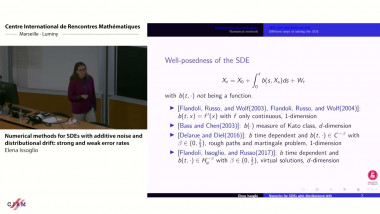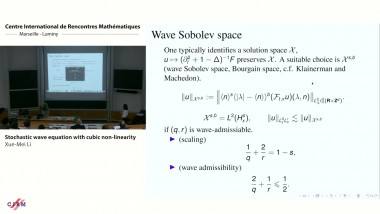Appears in collection : A Random Walk in the Land of Stochastic Analysis and Numerical Probability / Une marche aléatoire dans l'analyse stochastique et les probabilités numériques
Concave and convex functions are basic functions in economy and finance. In derivatives market, options pay-offs as Call and Put are in general convex functions of their underlying $((x-K)^{+}, or (K-x)^{+})$ and their Black-Scholes Prices are also convex. This property can be maintain in a random universe, (without reference to finance). Here, we are looking for the pricing point of view. The data is an underlying random field, $\left\{X_{t}(x) \right}$, non negative with $X_{t}(0)=0$, $X_{t}(+\infty )=\infty$, and a pricing (strictly) convex function $\Phi (0,z)$ whose the right-derivative is denoted $\phi$, given the price today of convex European derivative. The problem is to characterize a convex pricing rule $\left\{\Phi (t,z) \right}$ in the future, optimal in the sense that $\left\{\Phi (t,X^{t}(x)) \right}$ is a martingale. Obviously, without additional constraint, the problem has many solutions. So, thanks to convexity assumptions, it is natural to introduce the convex conjugate random field $\Psi (t,y)$. By the Fenchel theory, the Gap function $G_{\Phi }(t,z,y)=\Phi (t,z)+\Psi (t,y)-zy\geq 0$, $= 0$ if $\phi (t,z)=y$.
Put $Y_{t}(\phi (z)):=\Phi _{z}(t,X_{t}(z))$. The problem is to solve a be revealed problem find a par of conjugate convex random fields $(\Phi (t,z), \Psi (t,y))$ such that $\Phi (t,X_{t}(x))$ and $\Psi (t,Y_{t}(y))$ are martingales. The Legendre formula implies that $X_{t}(z)Y_{t}(\phi (z))$ is a martingale. As for revealed utility, the problem at least a solution if and only if their exists an equivalent intrinsic framework, where necessary the processes ‘$\left\{X_{t}(x) \right},\left\{Y_{t}(y) \right},\left\{\Phi (t,z) \right}$' are supermartingales, and $\left\{X_{t}(x)Y_{t}(\phi (x)) \right}$ is a martingale. The family $\left\{Y_{t}(\phi (x)) \right}$ is a family of pricing kernel for $X_{t}(x)$. The relation $Y_{t}(\phi (z)):=\Phi _{z}(t,X_{t}(z))$, and the monotony of $X_{t}(z)$ gives the way to obtained $\Phi _{z}(t,z)=Y_{t}(\phi (X_{t}^{-1}(z)))$ by a pathwise procedure. The convexity of the pricing kernel reduced the arbitrage problems. Itô's semimartingale framework is used to illustrate this characterization. The revealed pricing kernel y is solution of a non-linear SPDE. Many properties can be deduced of this pathwise construction.
Joint work Mohamed Mrad.
















